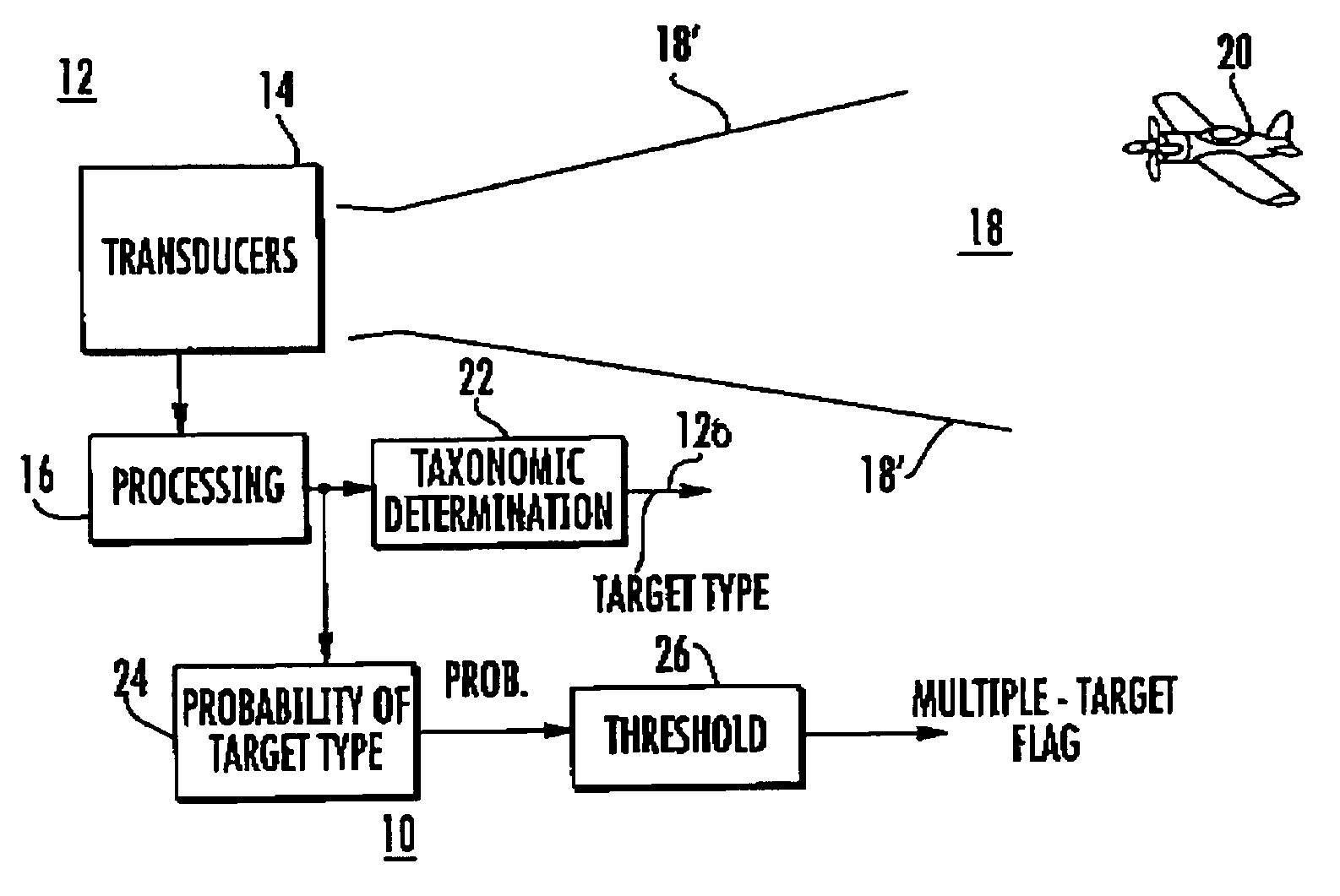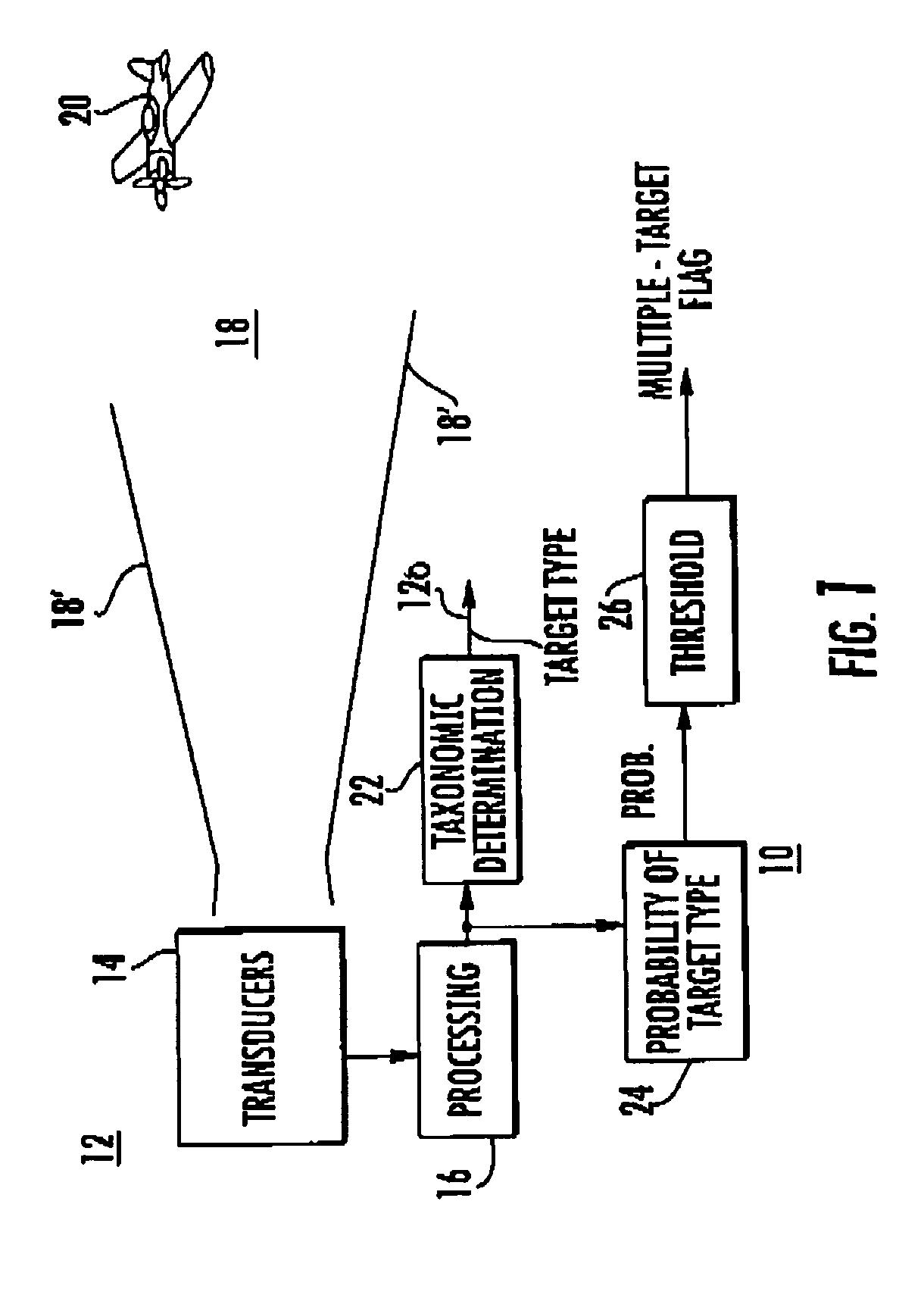Determination of the presence of closely spaced targets
a technology of closely spaced targets and observable objects, applied in the direction of instruments, communication jamming, measurement devices, etc., can solve the problems of no way to know which type of objects is observed, and no means
- Summary
- Abstract
- Description
- Claims
- Application Information
AI Technical Summary
Benefits of technology
Problems solved by technology
Method used
Image
Examples
Embodiment Construction
[0024]In FIG. 1, probability-of-target-type block 24 represents a portion of the function of multiple target presence detection or determination. Such multiple targets may arise under those circumstances in which one aircraft or vehicle shadows another, flying so closely behind that the two targets lie within the same range bin of the sensor. It can be important to detect such multiple targets, especially in a military or antiterror context. The remaining portion of the function of multiple target presence detection is performed by a thresholding block 26.
[0025]In general, the processing performed in block 24 of FIG. 1 uses the same information from the sensor or transducer that is currently used to make the taxonomic determination in block 22. More particularly, a determination is made of the prior probability that more than one target or object is observed by noting the number of occurrences of evidence of a particular type of target out of a particular number of observations.
[002...
PUM
 Login to View More
Login to View More Abstract
Description
Claims
Application Information
 Login to View More
Login to View More - R&D
- Intellectual Property
- Life Sciences
- Materials
- Tech Scout
- Unparalleled Data Quality
- Higher Quality Content
- 60% Fewer Hallucinations
Browse by: Latest US Patents, China's latest patents, Technical Efficacy Thesaurus, Application Domain, Technology Topic, Popular Technical Reports.
© 2025 PatSnap. All rights reserved.Legal|Privacy policy|Modern Slavery Act Transparency Statement|Sitemap|About US| Contact US: help@patsnap.com



